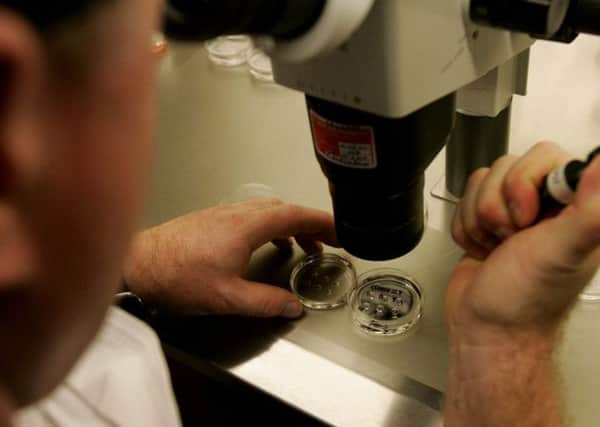Edinburgh Uni leading stem cell immune research


Researchers aim to develop treatments to repair the thymus, an organ next to the heart that produces vital immune cells but deteriorates with age.
Damage to the organ leaves older people more susceptible to infections and can cause a major risk for bone marrow transplant patients.
Advertisement
Hide AdAdvertisement
Hide AdTransplanting thymus cells into patients can help to repair and restore the immune system, studies have shown.
Previous research used cells from newborn babies that were removed as a normal part of heart surgery, but supplies of these specialised cells are scarce.
An international team of scientists led by the University of Edinburgh hopes to grow the cells in a project called ThymiStem.
Professor Clare Blackburn, from the university’s MRC Centre for Regenerative Medicine, said: “This exciting new project will test whether we can grow thymus stem cells in the lab and use these to make a fully functional organ for transplantation.
“We will then investigate how to produce these cells in sufficient quantities and high enough quality that they could, in the future, be transferred into patients.”
Funding from the European Union will be shared by nine research teams across Europe and the US, with the University of Edinburgh receiving £1.5 million.
Ms Blackburn said: “The ThymiStem project includes stem cell biologists, immunologists, tissue engineers and two cell banks.
“All of our skills will be needed to achieve the project’s overall goals and without this type of funding from the European Union, such a grouping could never be brought together.”